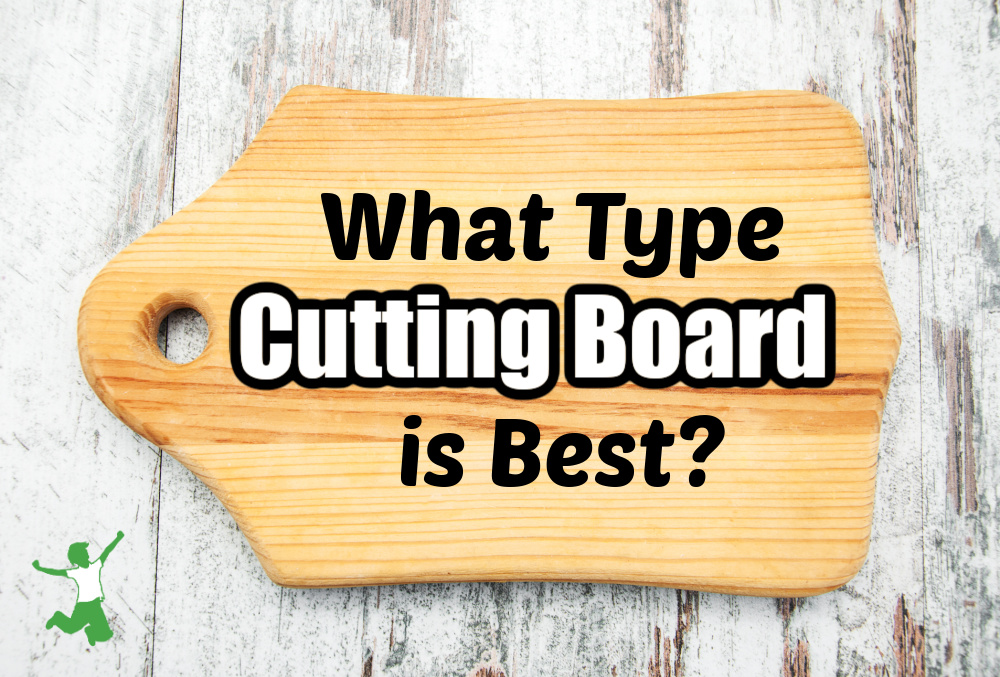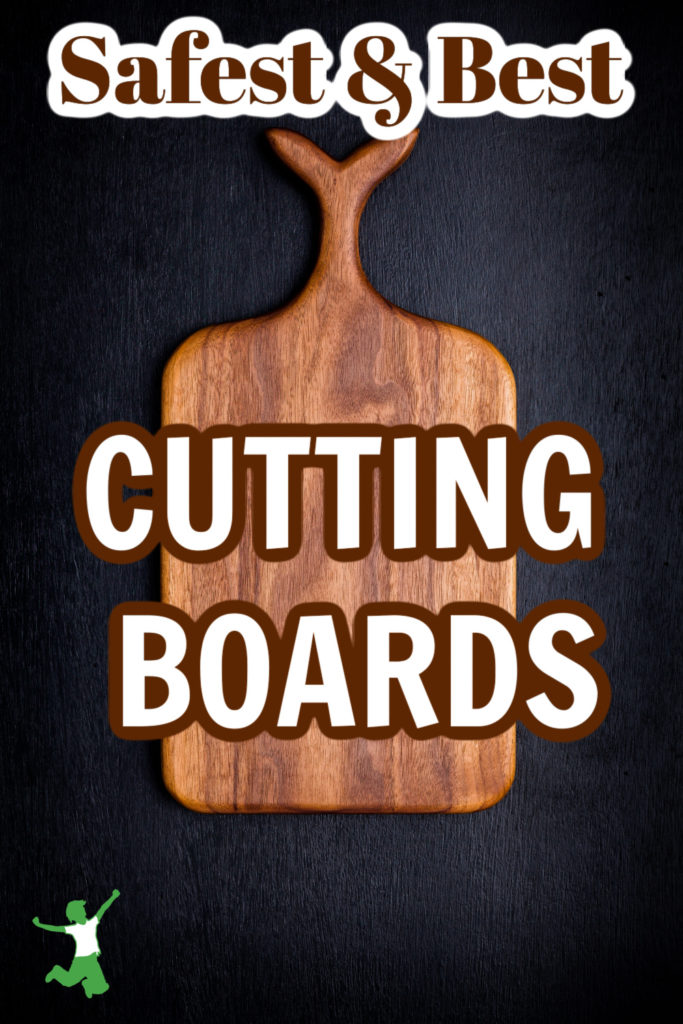Comparison of the various types of cutting boards and whether plastic is truly safer and better than wood as claimed.
Cutting boards of various shapes and sizes are very important tools in any home where meals are freshly prepared.
As for the best cutting boards, however, which material is truly optimal for food prep safety?
Are plastic or wood cutting boards preferable?
The answer might surprise you!
Restaurants Consider Plastic Cutting Boards Safer
Plastic has long been considered superior to wood.
For this reason, people have generally preferred this type of material in the name of food safety.
The prevailing wisdom is that plastic is less hospitable to bacteria, and therefore, would be safer.
Most restaurants use plastic for this reason. It is considered more sanitary by the industry because it is easier to wash and does not absorb food juices. (1)
But…is this really true?
Research Compares Plastic vs Wood
Research simply does not bear this out in practice, however.
As it turns out, wood is much less likely to harbor pathogenic bacteria than plastic!
Wood by far makes for the safest cutting boards to use in your home!
The research conducted by food microbiologists at the College of Agricultural and Life Sciences at the University of Wisconsin-Madison discovered that wood somehow eliminates bacteria but plastic does not. (2)
The manner in which the bacteria perished on the wood but not on the plastic is not known.
The scientists found that 3 minutes after contaminating a wooden cutting board, 99.9% of the pathogenic bacteria had died, while none of the bacteria died on plastic.
In addition, bacteria held at room temperature overnight on a plastic cutting board increased in number.
Surprisingly, the researchers could not find any bacteria present on wood treated in exactly the same manner!
So it seems that the prevailing “wisdom” that plastic is safer than wood is not true after all.
Wooden cutting boards are the best and safest choice after all.
Why is Plastic Unsafe?
I was happy to discover this information as I have always intuitively preferred wood over plastic cutting boards.
For one thing, wood is more stable than plastic during chopping. In my experience, you are far less likely to experience an injury when chopping meat and veggies on wood.
In addition, I have always thought that little bits of plastic or chemicals must be somehow released into the food from the repeated exposure to a sharp knife.
I have not seen evidence of this in the research. It just seemed to be common sense. Hence, I have stayed away from plastic and have always stuck with wood.
In particular, I have steered clear of plastic cutting boards with special antimicrobial surfaces.
Any product that boasts that it is antimicrobial screams “hormone-disrupting chemicals”, so I avoid them like the plague.
Best Type of Wood
For the best cutting boards, it is best to stick with old-fashioned wood block.
Do not use cheaper boards made with bonded wood pieces. The glue holding the board together can be toxic.
In addition, avoid “pre-oiled” wood boards. Oil them yourself at home with unrefined coconut or olive oil.
My choice is unfinished organic bamboo butcher block (like this one) as it is a sustainable, fast-growing natural resource that is manufactured in a safe manner as well.
Are Probiotics the Reason Wood is Best?
As an aside, I have a theory about why pathogenic bacteria are unable to survive on wood boards but instead grow exponentially on plastic.
Lactobacilli is a beneficial bacteria on the surface of all natural things. This includes our own skin. This beneficial microbe kills off pathogens that are within its vicinity.
This is why grassfed raw milk is safer than pasteurized. The naturally occurring probiotics “crowd out” any pathogens that might get into it.
Heat-treated foods just get contaminated if the same thing were to happen.
Perhaps this is the same method for how pathogens on wood cutting boards are destroyed within 3 minutes, yet this same thing does not happen on plastic?
(1) Why Don’t Restaurants Use Wooden Cutting Boards
(2) Wood Cutting Boards, Not Plastic, Are Safer for Food Prep










I like wood for cutting boards and utensils. Wood has a great feel.
Wood all the way! Thanks for the thoughts on the reasons why.
wood all the way for me.
I have two wooden cutting boards and one plastic; the plastic one sometimes winds up with a terrible smell and has to be scraped and disinfected. Bleecch!
Sarah, do you use oil to condition the wood? Mineral oil is always recommended, but I’m not comfortable with it since it’s a petroleum product. I’ve read that olive and other vegetable oils can go rancid, and can support bacterial growth. That’s my big dilemma with using wooden cutting boards.
I don’t condition my cutting boards with oil, but I probably should. I would use coconut oil as it very anti-bacterial, anti-fungal, and anti-viral.
Thanks! I don’t know why I never thought to use coconut oil… duh! I have to condition my wooden boards. I can’t stand when they’re all dried out and flaky. 🙂
I hate to admit that I much prefer wood/bamboo to plastic, and I have been using mineral oil to condition. I just wipe it all off as much as possible, and let the board “dry” well before I use it again. I cringe everytime I use them though, because I know we’re consuming small amounts of mineral oil. I’m definitely doing coconut oil from now on! Thanks again.
We use glass.
My parents had a grocery store when I was growing up with a small meat dept. We had a big wood butcher block for cutting meat, etc. We used a scraper to scrape the wood top clean of meat, blood, etc. We were actually taking a small layer of the wood off each time but it’s made of hardwood and it takes forever to lose much of it. We never sprayed it with anything or put soap or water on it. We scraped until we could see fresh clean wood again. Presently I have a small plastic cutting board that I don’t use very much. I seem to find other ways to cut up any food I’m working on. I would be very happy to find a good wood cutting board, though. Or a butcher block like we used to have.
I love the statistics that they found!! Thank you for this.
Can’t wait to hear of a study to find the “secret” formula that they can then patent and add into plastic!
I have always used plastic boards. They’re light weight and usually thinner than wood. I haven’t been concerned about bacteria hiding out in them. Our family is almost never sick, we see the Dr. maybe once a year for an ear infection or sore throat and that’s about it. We’ve elminated most food additives from our eating and I’ve seen a huge improvement–even in seasonal allergy symptoms, since about the last 2 yrs. Stomach ‘bugs’ don’t seem to plague our family. But don’t think that means I don’t use common sense with plastic boards. We do meat and veggies on separate ones, and wash with hottest water and sterilize in the dishwasher about once a week.
Plastic and the hot temperatures of a dishwasher? Wow. That just doesn’t sound like a good mix, nor does it sound logical. I’m not a fan of plastic and I never put mine in the dishwasher if I do use something plastic. Same with microwaving. I hardly ever use a microwave but if I do I don’t use plastic in there! Something is released in plastic when there’s heat involved. I ain’t no scientist so I don’t have anything “scientific” to add (as if that would or should matter).
I’ll stay with my wooden cutting board. I have taken a black marker and put a small “V” on one side and a small “M” on the other ( for veggies and meat) and we use it accordingly. I wash mine in the sink with warm water and a dab of Sal Suds, let it dry in the rack and then use coconut oil to treat it. Been doing it this way for years and seems to work ok.
Didn’t think about that. I use the DW because I know that plastic is porous and never feel they get clean with hand washing. Thanks for that food for thought!
I actually like the new bamboo ones–but they are so unnecessarily expensive!
“Plastic and the hot temperatures of a dishwasher? Wow. That just doesn’t sound like a good mix, nor does it sound logical”.
Look inside your dishwasher – it is probably a stainless tub with a plastic components and a plastic/rubberized rack. Sterilizing a plastic cutting board in the dishwasher is recommended. We use both plastic and wood CBs – both have a place, and both can be safe.
Quite a few years ago there was an article in Reader’s Digest about how wood naturally killed off germs and was safer than plastic.
Yes, the data that wood is better than plastic is quite a few years old, but for some reason, the myth that plastic is safer still persists!